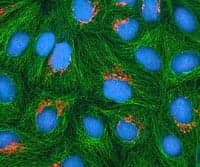
More specifically, the piece discusses the saga of Henrietta’s tumor cells, which were removed by physicians shortly before she died, and kept in a lab.
These cells, called HeLa cells, were subsequently shared with researchers worldwide and have been the focus of more than 74,000 studies.
Of note is that Henrietta did not give consent for her cells to be studied. And in the intervening 62 years, her family was also shut out of decisions pertaining to the research, and did not share in any profits flowing from discoveries that followed the research.
In the past 4 months, the National Institutes of Health has reached an agreement with the Lacks family, giving them control over how Henrietta’s genome is used.
Henrietta’s story has become a microcosm of a bigger issue, which is the absence of policies to regulate the pluses of studying genomes with risks affecting the privacy of those whose genomes are under study, and their families.
In an upcoming issue of the journal Nature, [removed]scientists from the University of Washington have described the HeLa genome[/removed], which they’ve recently sequenced.
Click here to read the story in the NYT, and click here to read commentary from the National Institutes of Health (NIH) on this multifaceted story.
[Sources: The New York Times, and NIH]



